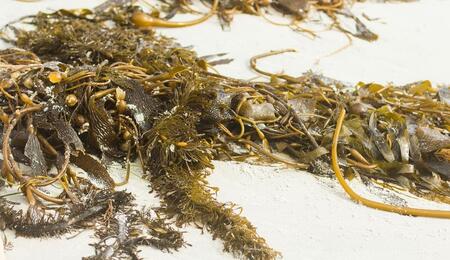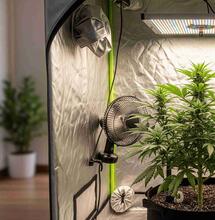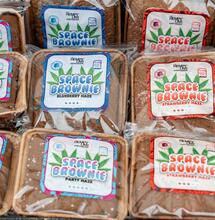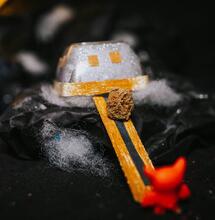Why Use Horticultural Seaweed as a Cannabis Supplement?

Seaweed is a natural Cannabis gardening supplement that conditions soil, promotes rapid growth and protects against fungicidal invasions. Learn more about the availability of seaweed, its nutritional content, and the overall benefits of using it as a supplement in cannabis gardening.
For centuries, over ten-thousand varieties of seaweed have been implemented as horticultural supplements across the globe. Seaweed contains both micro- and macro-nutrients, as it absorbs minerals and elements from the ocean, while also imparting a range of amino acids. In addition, seaweed promotes rapid and healthy plant growth, as it contains plant growth regulators - thus, both viability and vitality of plants is increased.
Seaweed processes sub-par or contaminated water by producing chemical compounds that help it to thrive; such compounds are then passed on to Cannabis plants. These protect against fungi, bacteria and viruses, helping to prevent fungicidal attacks - such as ‘dumping off’ - which can threaten delicate seedlings and seriously diminish your crop from the earliest stages of growth.
As a soil conditioner, application of these aquatic plants promotes growth of beneficial bacteria that help to decompose soil components; the gelatinous texture of seaweed encourages binding of soil particles. In addition, chelating materials help the soil to retain the nutrients that result from decomposition of soil components by the beneficial bacteria; leaching of said nutrients is prevented so that plants may uptake as many elements as possible.
Many American seaweed gardening products contain Ascophyllum nodosum, which is often referred to as ‘knotted wrack’. Containing at least sixty elements, knotted wrack offers a varying but healthy dose of nitrogen, phosphorous and potassium (macro-nutrients) and micro-nutrients such as iron, zinc, sulfur, magnesium, calcium, boron and copper. However, seaweed is traditionally implemented as a nutritional supplement, applied in combination with other nutrients in order to cover the total spectrum of required elements for healthy Cannabis growth.
Available Forms of Seaweed for Use in Gardening
While you can always harvest fresh seaweed if you live near the sea or the ocean, seaweed-based cannabis gardening supplements are available in few other forms.
Fresh Seaweed
Fresh seaweed can often be sourced directly from the shoreline. However, make sure to obtain permission before removing seaweed from protected or landmark beaches; contact the Parks Department with inquiries regarding the availability and sustainability of specific varieties. It is also important to only collect seaweed that has washed up on the beach itself; do not harvest fresh, living seaweed from within the water itself. Some geographical areas are depleted or polluted, meaning that you may not be able to obtain permission to (or should not) harvest fresh seaweed from that particular area. It is not recommended to collect downriver from a runoff site or polluted area and apply such plants to your garden.
In order to desalinate fresh seaweed, allow the rain to naturally rinse it, or hose it down yourself before use. This is done in order to prevent salt buildup in the soil, but soaking the slimy green stuff may be counterproductive, as it would remove helpful alginates.

Liquid Solutions
Halfway through the last century, production of liquid seaweed revolutionized inland gardening; liquid seaweed is typically offered in a concentrated form. Always read the manufacturer's instructions, as liquid varieties are sold in varying strengths and you do not want to over- or under-dose your Cannabis plants. Shelf life varies as well; store the product in a cool, dry and dark area and never mix more than what you can immediately use. Discard any excess after a short while, as its shelf life is drastically reduced once water has been added.
Kelp Meal
Seaweed meal (plain, raw seaweed that has been dried and ground) is also available for those unable to source liquid or fresh seaweed. This form of seaweed offers the most extensive shelf life, and should also be kept in a cool, dry and dark place in order to maintain freshness. Perhaps the most cost-effective form, seaweed powder or meal can be dosed in precise amounts and stored for extended periods of time. However, a quantity of nutrient value can be lost during the process of dehydrating the fresh seaweed.
Dried
The process of drying seaweed often reduces its nutritional content, which can include varying amounts of the three key nutrients for cannabis - nitrogen, potassium and phosphorus. Seaweed applied to plants in highly diluted state, however, means that the amount of N-P-K supplied is still very small. Therefore, remember that this is not a complete fertilizer.
How to Use Seaweed in Your Cannabis Garden?
Seedlings: Seaweed is a gentle supplement that can be used from germination through to veg and on to the flowering phase. Some growers begin by covering their seeds with a thin layer of soil, then misting them with a dilution of liquid seaweed. This helps to hasten germination and increase the amount of seeds that crack.
Foliar Spray or Watering-In: Liquid seaweed concentrate is effective in much smaller quantities than fresh or dried versions of the plant. Dilute with water according to the manufacturer's instructions and spray directly onto your plants, focusing the product on the underside of the leaves. Most seaweed meal is insoluble and fresh plants can rot or clog drips/sprayers, so liquid concentrations are often preferable in foliar feeds, drip irrigation, root zone targeting or soil dredging.
Soil: Most types of fresh seaweed can be mulched directly into the soil and will break down quite quickly. Fresh kelp (brown algae or Phaeophyceae), such as Laminaria, and bladderwrack (Fucus vesiculosus) are common choices that are accessible in many areas of the world. Otherwise, incorporate dried seaweed meal or diluted liquid concentrate straight into your soil or gardening plot.
Composting: For use as an activator in compost piles, mix fresh seaweed or dried meal with leaves or straw to create air pockets, as this aids in aerobic decomposition; turn the pile and do not forget to add high-carbon compost materials. Be aware, however, that due to its salt content, most worms will not live in seaweed-enriched compost, especially if fresh seaweed has been utilized. You will need to cultivate worms separately if employing them or their castings in your garden.
Also read on Soft Secrets:



